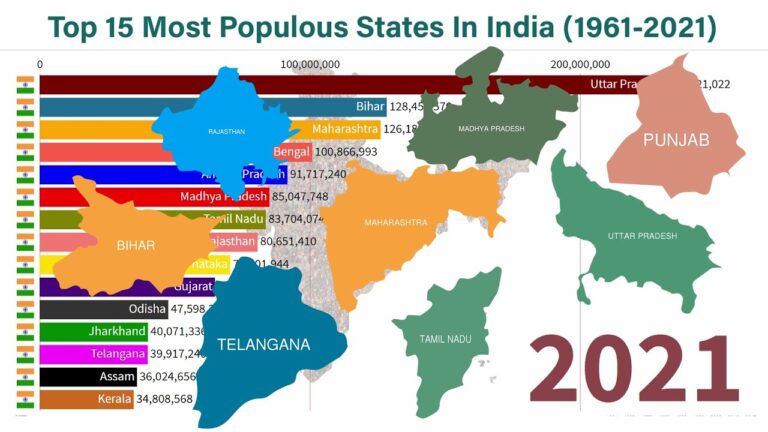
UPSC SOCIOLOGY MAINS – Paper 2 – Part C – Chapter 6 – Population dynamics : Emerging issues: ageing, sex ratios, child and infant mortality, reproductive health.
GS 3 MAINS – Indian Economy and issues relating to planning, mobilization of resources, growth, development and employment.
- A population is a group of individuals of the same species that occupy a specific area over a certain period of time.
- Population dynamics refers to how populations of a species change over time.
- In a given area, is the maximum population size of the species that the environment can sustain is called the carrying capacity.
- If the population grows indefinitely, less and less resources will be available to sustain the population. This process in which per capita population growth changes when population density changes is referred to as density dependence.
- Demography is the statistical study of human populations.Demography examines the size, structure, and movements of populations over space and time.
- Total fertility rate (TFR) is the total number of children a woman would bear during her lifetime if she were to experience the prevailing age-specific fertility rates of women and survi until the end of her reproductive life.
THE POPULATION DATA
- The worldwide population reached the 7 billion mark in 2011, and today it has climbed to about 7.7 billion. It is expected to grow to nearly 8.5 billion in 2030, 9.7 billion in 2050, and 10.9 billion in 2100, the worrying UN trend shows.
- India has the world’s second-largest population after China. While China contributes to 18.47 % of the world’s share, India is not far behind with 17.70 % share of the global population. Following India, the United States has a share of 4.25 % of the entire world population, according to data by Worldometer.

FACTORS AFFECTING POPULATION DYNAMICS
Some characteristics of populations include the population density , the birthrate , and the death rate. If there is immigration into the population, or emigration out of it, then the immigration rate and emigration rate are also of interest. Together, these population parameters, or characteristics, describe how the population density changes over time.
THE RELEVANCE OF ANALYSING POPULATION DYNAMICS
- Much of the projected growth in population in coming decades will take place in developing and the least developed countries, where it is likely to exacerbate poverty and add pressure on the economy, basic health and social services and the environment.
- Ageing is another major outcome of demographic change resulting from fertility decline and increased longevity. The number and proportion of older persons aged 60 years or over are rising in all countries.
- Current population challenges are not only about population numbers but also about polarization of abundance and deprivation–that is, inequalities.
- Bad urban planning is worsening living conditions.
- Whenever population pressures are associated with resource constraints or environmental degradation, the poorest segments of the population—who rely on access to natural
resources and are living in or migrating between vulnerable places—suffer the most. Those at greatest risk due to these factors include women, young girls and children, particularly in contexts marked by gender imbalances and ethnic or racial disparities, as well as cyclical and seasonal migrants and older persons who do not have minimum social safety nets.
REPRODUCTIVE HEALTH AND POPULATION DYNAMICS
- Reproductive health status, processes and outcomes in a given country are affected by norms regarding marriage, childbearing and sexuality, as well as by women’s educational
and economic status and ethnic background. - An estimated 226 million women in developing countries lack access to modern contraceptive methods, and worldwide approximately 40 per cent of pregnancies are unintended.
- In many countries, access to quality reproductive health information and services is hindered by prevailing adverse attitudes and practices such as honor crimes, sexual coercion and violence, female genital mutilation/cutting, pre-birth sex selection, rape, restrictions on women’s mobility in seeking health services, seclusion, and forced/child marriages among others.
- Improving access to reproductive health services and protection of reproductive rights will have a spin off effect of resulting in balanced population and development.

INDIA – POPULATION DATA
- India, with a current population size of 1.37 billion, has the second largest population in the world. By 2027, India is expected to overtake China to become the most populous country (UN World Population Prospects 2019).
- The overall size of population will continue to increase for some more time as two-thirds of India’s population is under 35 years.
- Even if this cohort of young population produces only one or two children per couple, it will still result in a quantum increase in population size before stabilising, which as per current projections will happen around 2050.
- Most Indian states are expected to hit replacement fertility levels of 2.1 children per woman by 2021.
- Fertility rate has already declined to an average of 2.2 in 2017, according to a government survey of 22 major states, while urban fertility has already fallen below replacement level, to 1.7 children per woman.

